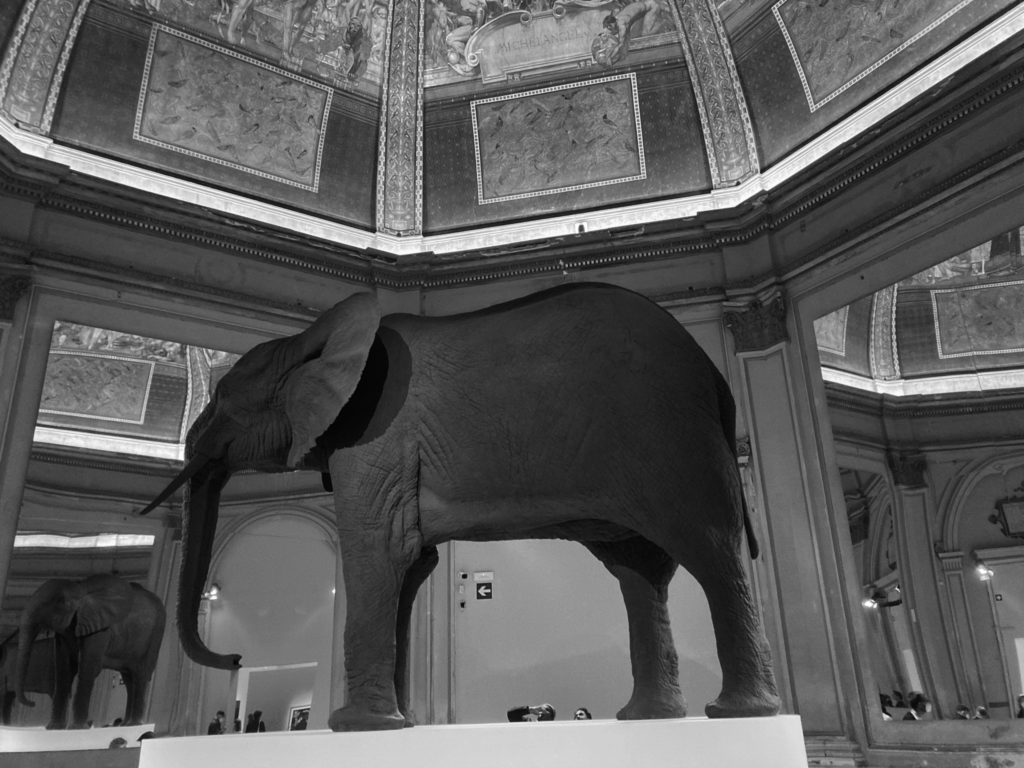
This is a Venice Biennale like no other. Deferred for one year by a global pandemic, the pleasures of this long-anticipated expression of art and freedom, of renewed access to art, people and to Venice, is overshadowed by a world-devastating war in Europe. Venice has never seemed more fragile and threatened, and not just by rising seas. The newly restored Russian Pavilion is shut down; the curators and artists cancelled their participation in protest at Putin’s War. Grim daily reports of the human tragedy of Ukraine bring into focus the realities of making art in conflict zones worldwide and of the significance of the diasporic artist. It has inevitably shifted perspectives of this Biennale whose curator optimistically claims that ‘art and artists can help us imagine new modes of existence and infinite new possibilities of transformation’.
The Biennale has an overwhelming 1,000 or more works, and the main exhibition is a triumph, presaging hope over doom, with a cogent vision. One that is driven, not by some revanchist feminist militancy, or New Ageism, but from the position that the impulses of art are limitless, that the artist aspires to freedom, to live in a state of nature and that Man is not the measure of all things. The guiding light for these ideas on freedom, fluid human identities, on relations with the nonhuman and the earth, is not so much Hobbes’ Leviathan but the philosopher Rosi Braidotti. Her interdisciplinary writings, especially on the Posthuman, underpin the show in the Giardini Central Pavilion and in the vast Arsenale, curated by Cecilia Alemani, the first Italian woman to be invited to this privileged role. She is not the only first in a Biennale that breaks new ground. The majority of the 213 artists from fifty-eight nations selected by Alemani are women, many unknown to an international art world. She takes further the approach of The Encyclopedic Palace, curated by Massimiliano Giorni for the 2013 Biennale which attempted to break down the divisions between professional and amateur, insider and outsider. Alemani includes gender non-conforming artists and hitherto unrepresented indigenous artists in an exalted, exuberant feast of work, so rich in material, unfamiliar imagery and ideas that even the most seasoned critic is confounded. Prevailing notions of an avant garde, market-driven international art, of global difference between East and West, or indeed North and South, are upended. But how far is this challenge to critical orthodoxy also met by the eighty National Pavilions, now spread across the entire city of Venice, with their habitual inequality, their national, racial, and cultural divisions? At this point of world crises, is this exhibition the sea change that might shift the dominant Eurocentric axis and fully open up the Biennale to a multipolar world?
The rest of this article is only available to subscribers.
Access our entire archive of 350+ articles from the world's leading writers on Islam.
Only £3.30/month, cancel anytime.
Already subscribed? Log in here.
Not convinced? Read this: why should I subscribe to Critical Muslim?